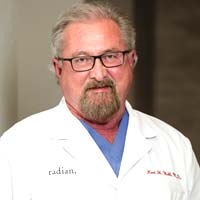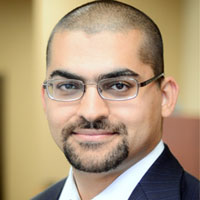Alternative Hair Loss Treatments – Beverly Hills Hair Restoration
Hair loss is a problem faced by men and women across the globe. People suffering from it keep looking for treatment methods ranging from simple medications to advanced surgical options. This depends on the expenses they are willing to foot, the time available at their disposal and their needs.
To cater to patients of all ages and professions advanced research studies have been initiated by hair restoration clinics, cosmetologists and pharma companies. Clinics have also developed customized solutions to tackle individual needs.
Based in Los Angeles Beverly Hills Hair Restoration clinic tries to provide alternative hair loss treatments for both men and women who suffer the effects of genetic hair loss. The clinic specializes in offering surgical remedies for hair loss and is also offering other hair loss treatments.
The clinic offers the ACell Therapy along with hair restoration procedures. This treatment involves the administration of ACell + PRP injections to strengthen the scalp area and prevent hair loss. Surgeons well trained in the method inject a combination of ACell with PRP (platelet rich plasma) into the affected area. This treatment helps in rejuvenating miniaturized hair follicles. They become bigger and healthier and hence produce more healthy hair.
As part of its natural treatments offering, the clinic prescribes Revivogen which prevents thinning of hair in men and women. The formulation can arrest the production of DHT or dihydrotestosterone which is the root cause behind hair loss. Revivogen is offered as a kit comprising of revitalizing shampoo, thickening conditioner and scalp therapy treatment formulation.
For delivering advanced non-surgical options Beverly Hills Hair Restoration clinic offers FDA-approved HairMax Lasercomb. This laser treatment involves low-level lasers which can stimulate hair growth and also slow down or stop hair loss.
In surgical methods Beverly Hills Hair Restoration provides two basic techniques of hair replacement, Flaps and Transplants or grafts. New hair is not created but hair is redistributed from one part of the scalp to another. The method evenly distributes the existing hair over the entire scalp. Scalp reductions and tissue expansion are two other techniques used to complement and improve the results achieved with Flaps and Grafts.
The sides and back of head serve as the ultimate donor sources of hair as they are genetically immune to balding. Hair grows here throughout a person’s life if patients are not affected by dermatological diseases. The hair on the side and back of the head provides transferable tissue
for Flaps and Hair Grafts method. Once transplanted the tissue will continue to produce hair even in new location of scalp.
Hairfear
Frequently asked questions about hair transplant procedures
How much does a hair transplant cost?
Hair transplants can vary in price based off of the area in the world that you are interested in getting a hair transplant as well as the size of the area where you may need a hair transplant. Experienced doctors in the United States will often charge some of the highest prices for a hair transplant worldwide and this is why so many travelers make the move to other parts the world like Turkey, India, Thailand, Mexico...etc for their hair transplants.
Will a hair transplant hurt?
Although hair transplants may look like a particularly
unpleasant or painful experience is actually very little discomfort involved
with the surgery itself. Hair transplants are always done under an anesthetic so there's absolutely zero pain during the treatment itself. Many people actually relate the process as being very similar to going to the dentist for filling or root canal. Mild pain can persist over the course of postop treatment but he generally just resumes for a few days.
Who can deliver the best surgery?
It's usually best to consider working with surgeons who have and IAHRS certification or international alliance of hair restoration surgeons recognition. IAHRS can often deliver recommendations for the best surgeons in each particular area.
Is this scarring noticeable?
Any type of hair transplant will require the use of incisions throughout the scalp. There can also sometimes be a small scar from the donor area towards the back of the scalp. Asking to look at photos of the surgeon's previous work will help you to see roughly how bad the scarring could be. In most cases an experienced professional can limit the look of scarring and noticeable marks from the surgery.
How long does it take for the hair to grow?
In most cases hair growth will start within eight months and you can start to see a full effect from the hair transplant after a full year. The initial signs of growth can usually start between 3 to 4 months after the surgery.
Are the results permanent?
The hair follicles that are transplanted are generally the ones which are genetically resistant against the symptoms of baldness. As long as you receive hair loss treatment later in your life after the symptoms of balding have started to subside, you can have a better chance at permanent results.
While everyone know you've had surgery?
If you want to limit the chance that people may find out about your surgery it's important to give at least three weeks of healing as the surgical area will be affected and red just after surgery. After around a month of healing it can look far less noticeable. You could consider wearing a hat while time passes or opting for some extra time off if possible.
How long should I rest after surgery?
It's recommended to rest for at least a few days after surgery so that your body can recover. Trenton to over exert yourself and limit sexual activity, running in the gym for around 10 days after surgery.
Is it possible to lose more hair as a result of surgery?
There is always a chance of shock loss which happens when the hair is weak and miniaturizing after the surgery. As long as the surgeon is choosing the correct hair follicles and performing the surgery well it's possible to minimize the chance of this happening however.
Will I need another hair transplant?
The need for another transplant really depends on the individual. With a solid foundation surgery and working to potentially bolster results with drug therapy, you can improve the stability of the hair that was transplanted as well as prevent further loss. Getting a hair transplant early
on in your 20s or early on in life could lead to needing long-term transplants as hair loss can be progressive.







